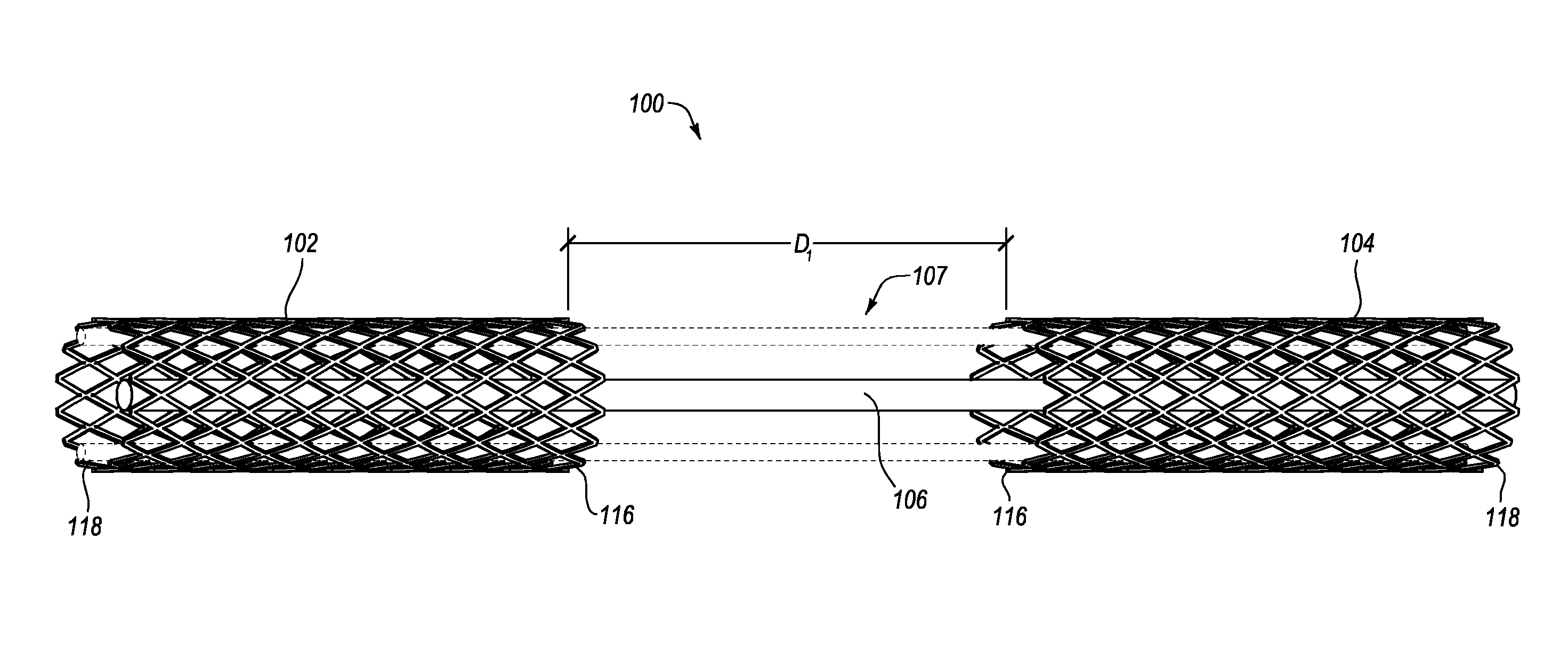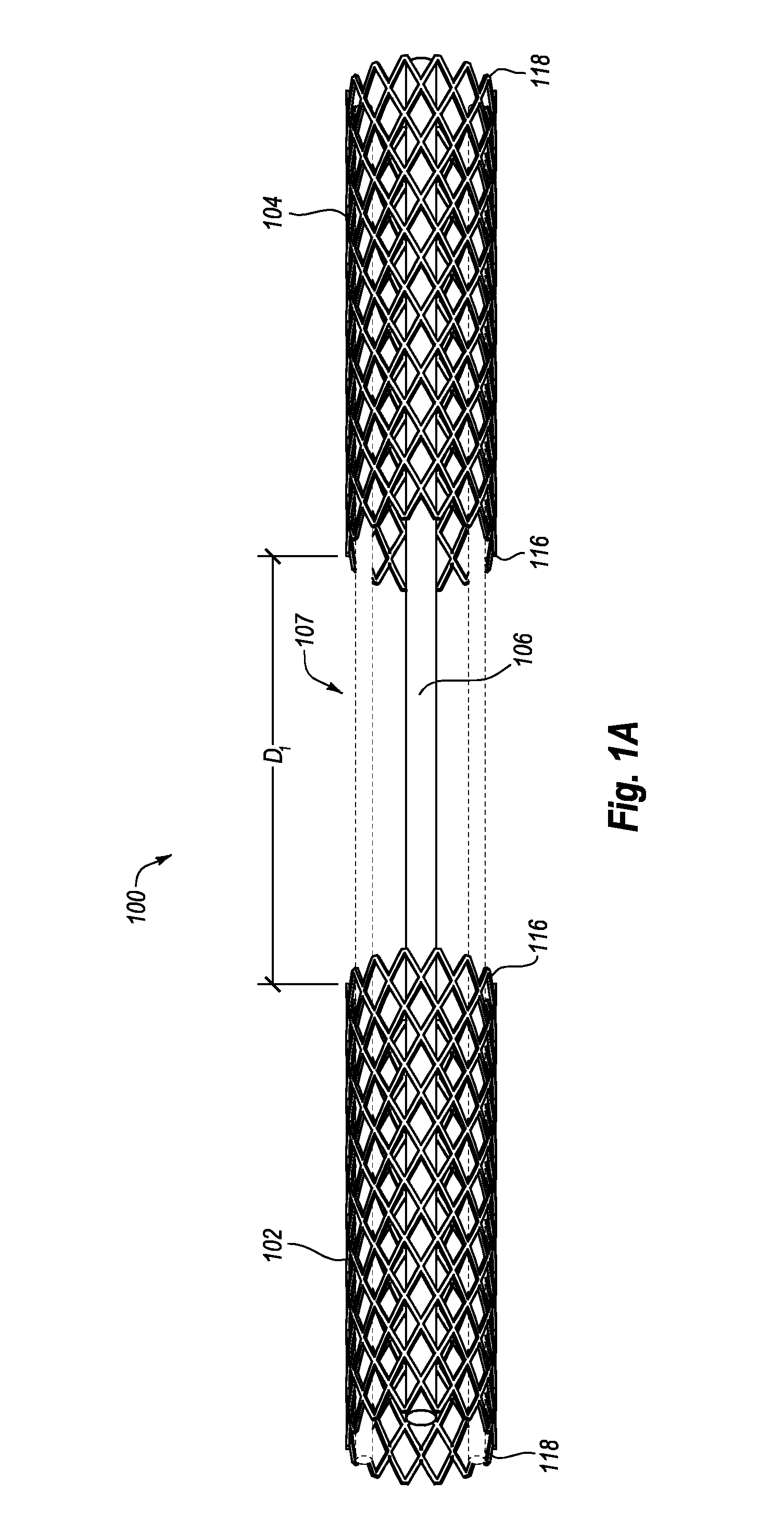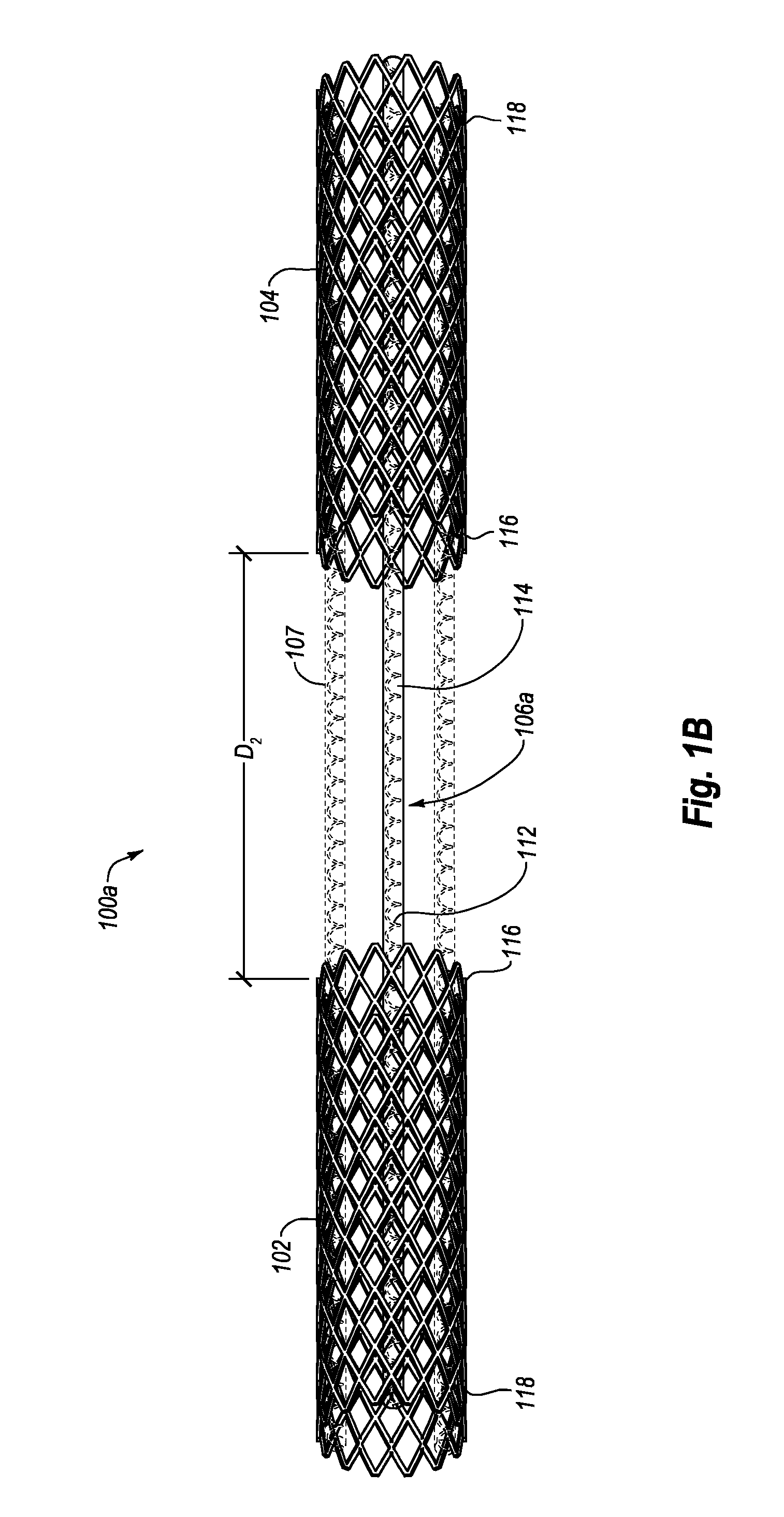Intravascular cardiac restraining implants and methods for treating heart failure
a technology of cardiac restraining implants and implants, which is applied in the field of intravascular cardiac restraining implants and methods for treating heart failure, can solve the problems of inability of the heart to effectively fill with blood or pump blood, no treatment currently known to be consistently effective, and further inhibit the proper and effective heart function
- Summary
- Abstract
- Description
- Claims
- Application Information
AI Technical Summary
Benefits of technology
Problems solved by technology
Method used
Image
Examples
Embodiment Construction
I. Introduction
[0025]Described herein are intraluminal devices (e.g., intravascular endoprostheses) designed for treatment of heart disease and heart failure and methods for their use. For instance, the devices disclosed herein can be configured to anchor into two different portions of a coronary vein to reshape or reinforce a diseased, weakened or distended portion of the heart. Such reshaping or reinforcement of the tissues of the heart can counteract the effects of one or more of congestive heart failure, tissue necrosis following myocardial infarction, megalocardia (i.e., enlargement of the heart), and the like.
[0026]In one embodiment, an intraluminal device includes an intravascular cardiac restraining implant. An intravascular cardiac restraining implant may include a first tissue anchor configured for implantation in a first region of a coronary vein, a second tissue anchor configured for implantation in a second region of the coronary vein, and at least one elongate member c...
PUM
 Login to View More
Login to View More Abstract
Description
Claims
Application Information
 Login to View More
Login to View More - R&D
- Intellectual Property
- Life Sciences
- Materials
- Tech Scout
- Unparalleled Data Quality
- Higher Quality Content
- 60% Fewer Hallucinations
Browse by: Latest US Patents, China's latest patents, Technical Efficacy Thesaurus, Application Domain, Technology Topic, Popular Technical Reports.
© 2025 PatSnap. All rights reserved.Legal|Privacy policy|Modern Slavery Act Transparency Statement|Sitemap|About US| Contact US: help@patsnap.com



